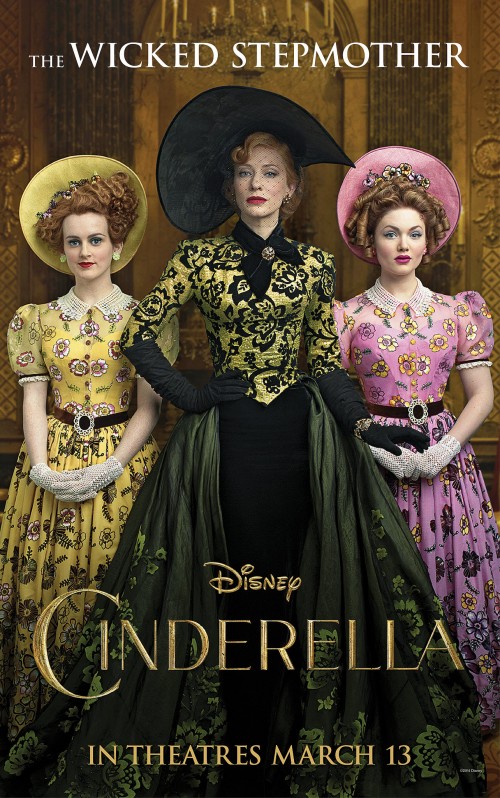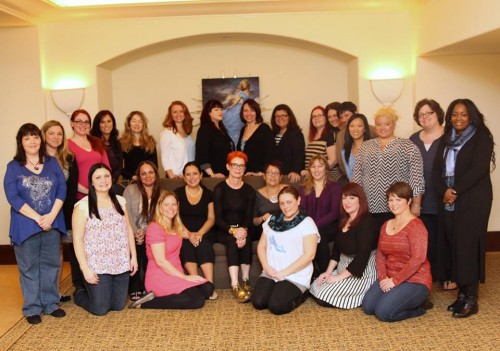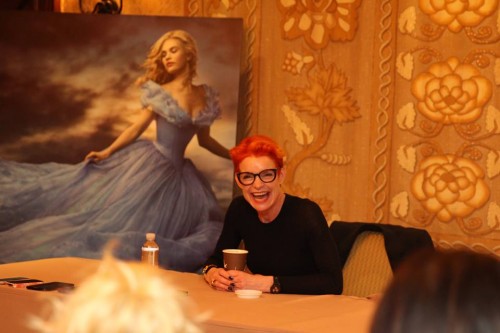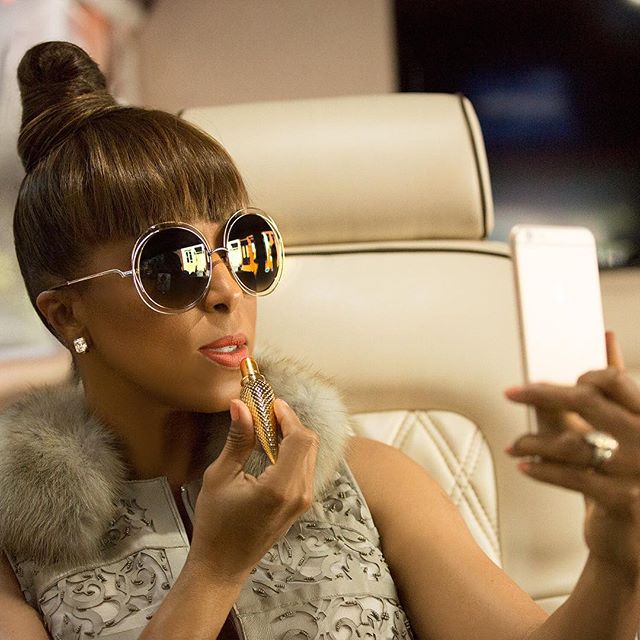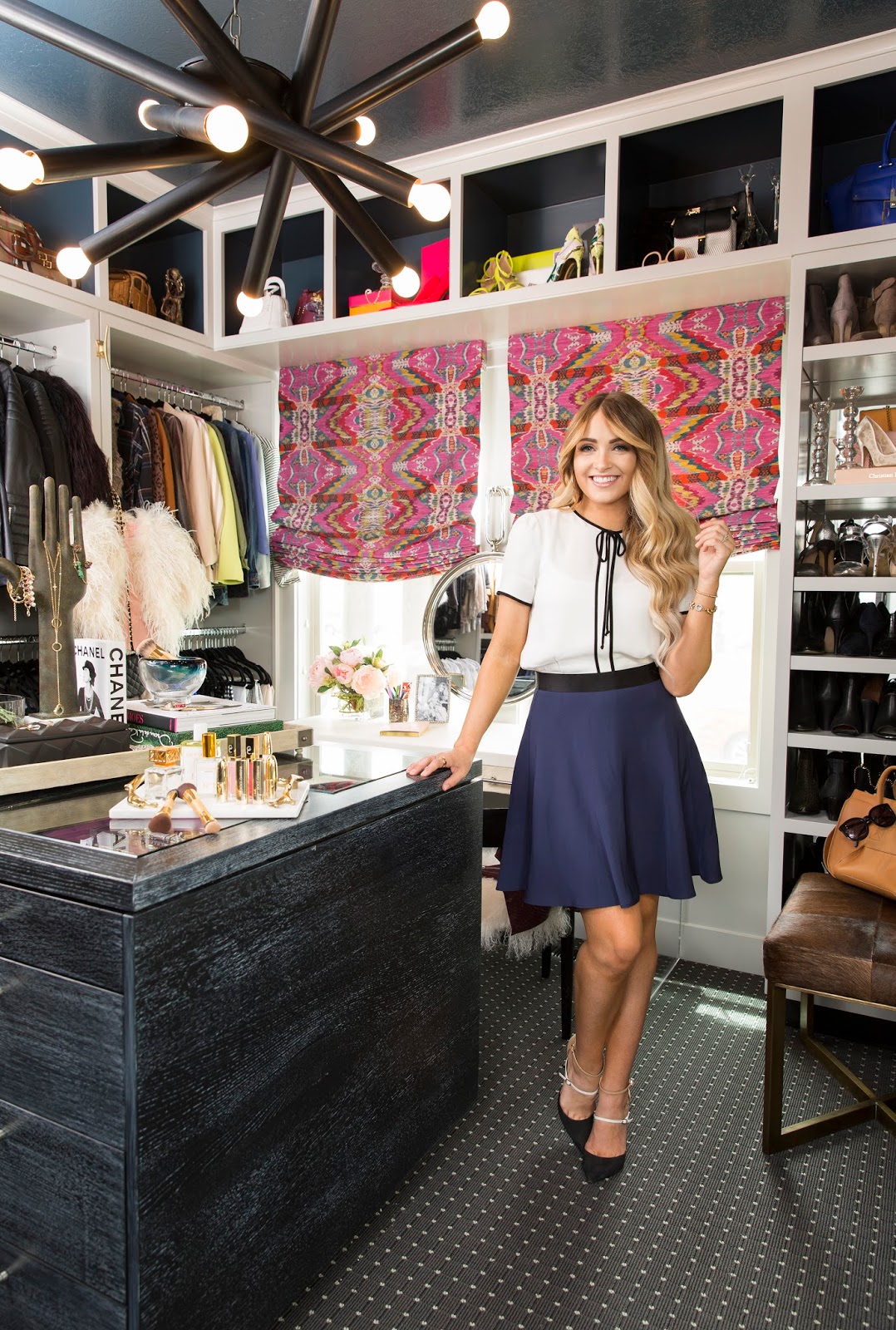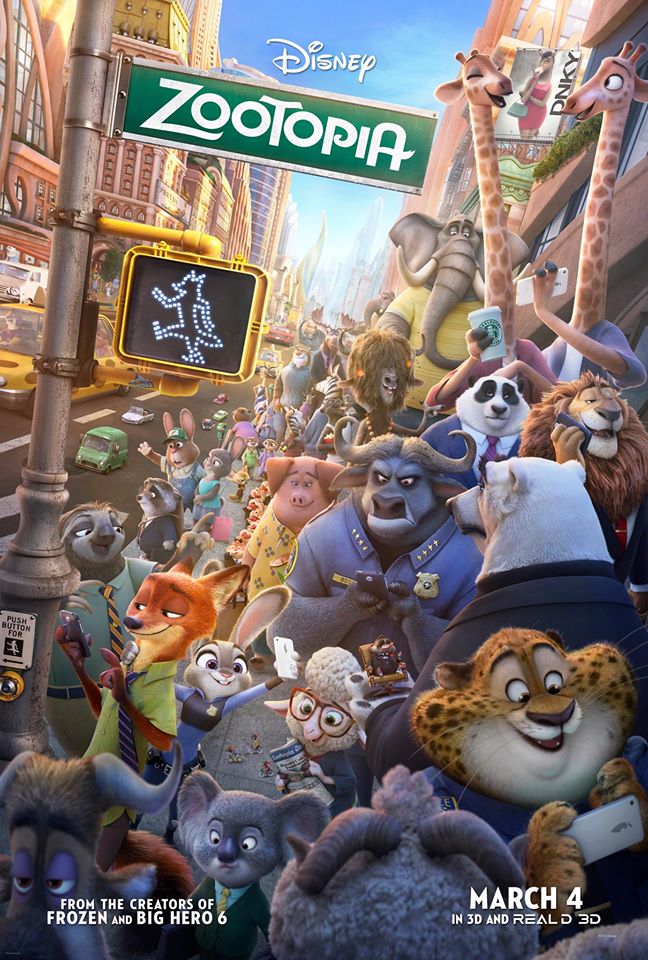Award-winning costume designer Sandy Powell took a few minutes out of her very busy schedule to chat with us Disney Bloggers about working on the iconic film Cinderella! She shared with us how she created the ball gown for Cinderella, color palettes, advice for inspiring costume designers and so much more! Read all about it inside and don’t forget Cinderella is in movies now!
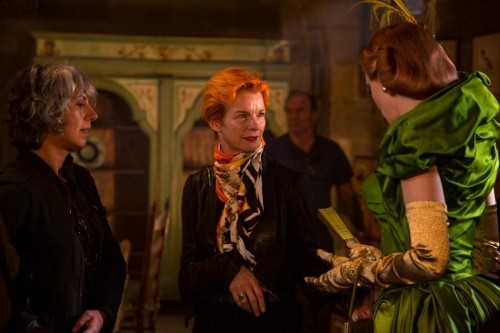
Symbolism and Colors
Sandy: I kind of chose all the color palettes for each of the characters. I work closely with the people who design the sets, and the set dressing, so that we make sure that nothing clashes with the curtains and the furnishings. But the colors are all of my doing, and that’s one of the things I really enjoy more than anything else.
I don’t intellectualize it that much. I don’t pick colors for symbolic reasons. I pick colors because they feel right, and because I like them. I have a much more instinctive feel—or intuitive reaction—and response to color as opposed to, ‘I’m doing this because it symbolizes this or symbolizes this.’ But yes, I mean, of course the green does represent envy. All [Lady Tremaine’s] colors were chosen because they’re cool colors. None of them are kind colors or fresh colors or youthful colors, particularly though. I think they’re attractive colors because I wanted her to look like a fashion plate and attractive, but they’re strong; all of them are kind of a bit mean.
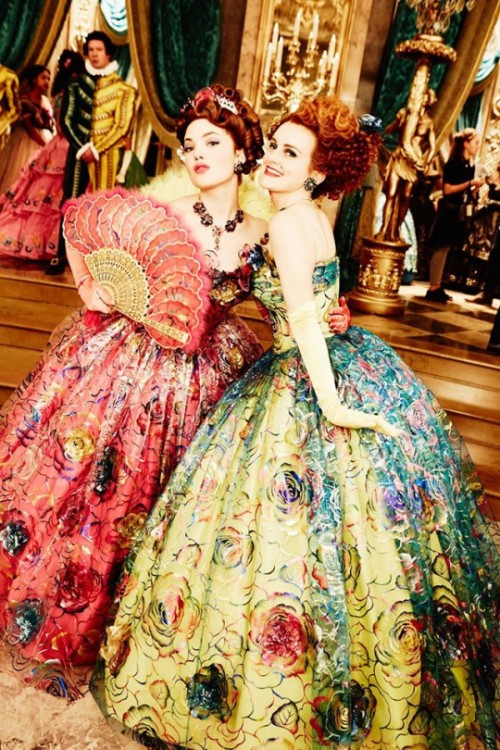
Favorite costume to make?
Sandy: They’re all really meaningful to me. It’s like they’re my children; you don’t have a favorite. I mean, you like different ones at different times of the day, but of course I’m incredibly proud of the ball gown. You can’t not because that’s the one that took the longest. I spent the longest on it, developing it. And it might not have worked. But it came out exactly how I hoped. So I’m proud of that one. But there are others that I love. I like the men’s as much as the women’s. I like them all, or they wouldn’t be there.
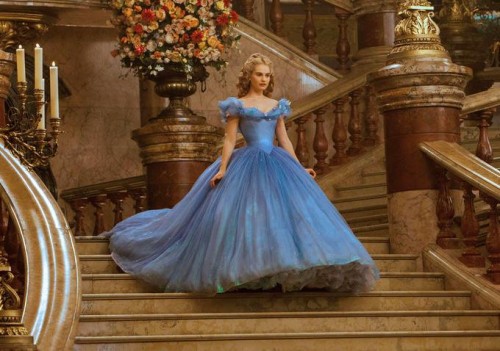
Designing the ball gown, the quintessential princess dress
Sandy: I much prefer to know when who will play the role before I design a costume. It really does make a difference. Because we screen tested lots of girls for Cinderella, so I knew, and they were all different shapes and sizes. Different colorings, and it really makes a difference who the person is. As to what shape the dress is going to be. I kind of knew it had to be voluminous. I knew it had to be big and had to be impressive, but without being heavy. Yet it helps knowing who the actress is and what shape you can make them, or what shape they are, and then what you can turn them into, as well.
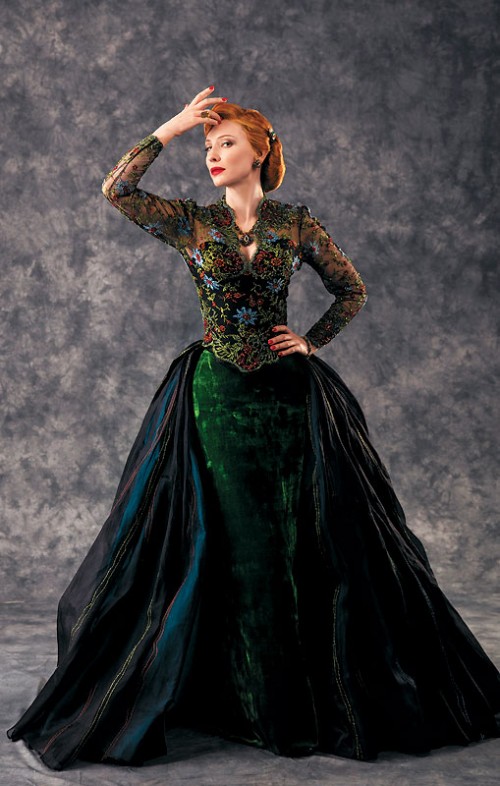
How long did it take to create all of the costumes?
Sandy: I was actually working on this for over a year, from start to finish. Till the very last day of the shoot. Actually one of the last things we shot was the wedding scene, and the wedding dress was actually the last thing I designed. And that was really right towards the end of filming, so at least a year from start to finish.
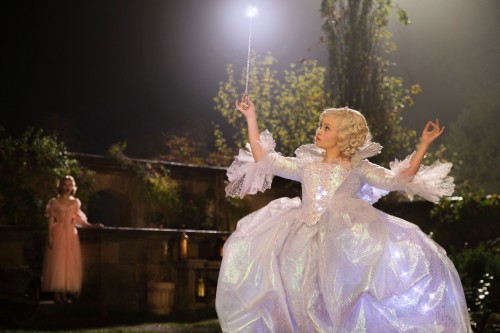
The Fairy Godmother’s Costume
Sandy: It was an idea I had that was rather ambitious and to be honest, we didn’t have enough time to really develop it. It could have gone a lot further, and been a lot more success—not to say it wasn’t successful. I think the costume as a whole works in the film. But I had this mad idea that she actually literally twinkled, and all over. But in sequences and sort of choreographed with either the dialogue or what she was doing there. We got the lighting designed. We got all the circuits made up by this lighting company, but it took a lot longer than I expected.
And then we couldn’t actually really construct the costume till we had the lights done, so we were waiting and waiting for the lights to be finished. We knew the shape of the costume. I had the underpinnings done, like the corset shape, and then the panniers, which is the cage. And we had all the fabric that need to go on top of it.
But that had to be worked in with the lights. So that costume actually ended up being really rather thrown together at the last minute. I kind of didn’t like it; it looks like it’s been thrown together. In a way, I think it’s quite funny that it looks like it’s been thrown together. It looks like she’s made it, thrown it together. And the lights don’t work properly, really. It’s sort of like the magic doesn’t work that well the first time. I think, well actually it’s quite appropriate that it’s sort of lit up a bit.
And what happened was, the technician who designed it, it’s like four or five or six circuits of lights all lit like a bit here and another bit. And she had to carry it, have a battery pack strapped underneath, and then each of those circuits had to be plugged into the battery pack to make it work. And this is when she had the guy up her skirt every day, literally blocking everything—and you couldn’t do that until she was in the dress. Then he would operate it from a computer. She’d be on the set, and he’d be over here with the computer, sort of like turning the lights on and off. And in an ideal world we needed a lot longer to rehearse the scenes, and with the dialogue. And we didn’t have the luxury of that. So we kind of just did it a bit.
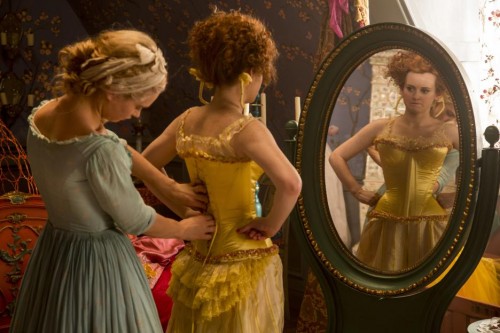
The corsets and how tight they were?
Sandy: This is such a fallacy, this whole kind of corset move, and everybody’s latched on to, ‘The corsets are tight, the corsets are tight.’ The scene with [Drisella and Anastasia] is a joke.
I have really great costume makers who know what they’re doing. And especially with corsets, and corsets are, they’re made very very strongly. And if they’re made well, and fit for the person they’re made for and they fit, they don’t hurt. Yes, it’s tension, you do have to pull them in. I mean, that was a joke, obviously. It shouldn’t be that difficult to get somebody into one…and of course it doesn’t have to meet edge-to-edge, but wherever it’s comfortable. And it’s all about making the right silhouettes and the dress that goes over top and making everything fit nicely.
Advice for young men/women who want to designing costumes?
Sandy: I’d advise anybody who wants to do costumes, to learn how to sew, and learn how to make them. Because you’d be surprised, there are an awful lot of costume designers who don’t know how to do it. And I really don’t know how you can design and how you can talk to somebody else who’s making something, unless you know how to do it yourself. You have to start at the bottom and be a maker, and actually learn how to construct and sew, so you understand the construction and the engineering, which is what it is.
Cinderella is in theaters now! xoxo
